A couple of notes about radio
restoration and some advice and recommendations for those who want to
restore radios.
Can every radio be restored? Theoretically yes, but in reality, no, unless you want to throw unlimited resources and money at it. If a radio is missing parts or has parts that have gone bad and that need to be replaced, it depends on if the parts can be found. Some parts for the more popular brands are being reproduced so do an internet search if you need parts. Also if the chassis is very rusted and all contacts and switches (especially the band switch selectors) are badly corroded the radio is beyond repair and restoration. If a radio has been stored in a humid place for many years it's internals are likely rusted and switches are badly corroded. So make sure you properly assess a radio's condition before starting any restoration work.
Can every radio be restored? Theoretically yes, but in reality, no, unless you want to throw unlimited resources and money at it. If a radio is missing parts or has parts that have gone bad and that need to be replaced, it depends on if the parts can be found. Some parts for the more popular brands are being reproduced so do an internet search if you need parts. Also if the chassis is very rusted and all contacts and switches (especially the band switch selectors) are badly corroded the radio is beyond repair and restoration. If a radio has been stored in a humid place for many years it's internals are likely rusted and switches are badly corroded. So make sure you properly assess a radio's condition before starting any restoration work.
I always restore the electronics in my radios simply because a lot of components go bad with age. Electronic restoration includes:
- Radio chassis including dial scale and knobs etc. is
cleaned.
- Deteriorated wiring is replaced, including power cord.
- If there is no fuse in the mains line one will be added.
- Wax/paper capacitors are replaced.
- Electrolytic capacitors are replaced if out of tolerance.
- Tubes are tested and replaced if necessary.
- Out of tolerance resistors are replaced.
- Speakers are cleaned and tested and repaired or replaced if needed and if possible.
- Dial cords are restringed if needed.
- Band switch selectors and tuning controls are cleaned and lubricated.
- Other failed parts are repaired or rebuild if possible or
replaced as needed if available.
- The radio is re-aligned if needed. If the radio still has
sensitive reception and the dial scale still tracks reasonably well I
won't touch the alignment.
- The radio is bench tested for at least a day.
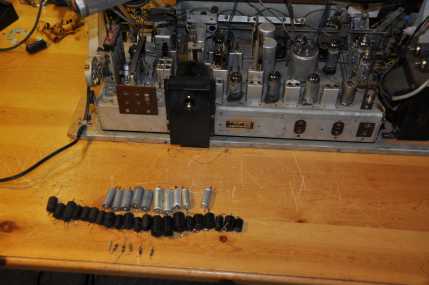
This picture shows a Philips
BX998a chassis and the capacitors and resistors that have been replaced
Do I keep the radios original? Yes and no. Yes in that I will replace bad parts with modern electrical equivalents for instance capacitors are replaced with capacitors that have the same capacitance and the same or a higher voltage rating. No in that I will not try to make the component look exactly like the one it replaces. Typically I'll leave big capacitor cans mounted on the top of the chassis in place and either mount their replacements under the chassis or I will restuff the cans with their modern replacements. Note that most components are mounted under the radio chassis anyway so most people will never notice the radio has been restored unless they take it apart.
Should every radio cabinet be restored? If the radio still looks good even if it shows it's age probably not, that is many people like the character of the original finish and a rare radio with a good original finish is worth more that one that has been refinished. However if the radio cabinet just looks bad and/or the cabinet is broken it needs to be repaired and refinished. Should you finish your radio? Well, assuming you have the skills, you are the judge and you decide whether a cabinet should be refinished or not. If I decide that the cabinet does not need to be refinished I will clean the cabinet anyway and use teak oil or similar to rejuvenate the varnish. Often times furniture oils and scratch removers work amazingly well.
Cabinet restoration includes:
- Strip old vanish/paint.
- Fix loose wood joints or cracks in cabinet.
- Fix veneer blemishes or reveneer sections where needed.
- Replace speaker cloth if needed (you decide).
- Refinish the radio using two component modern paints.
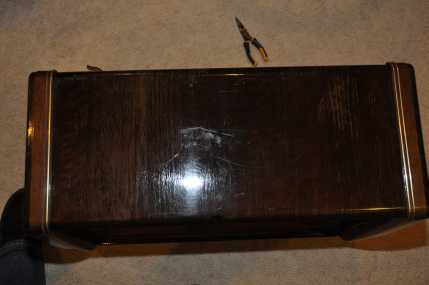
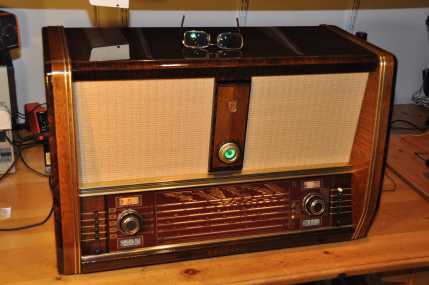
Here is the cabinet of that same
Philips BX998a - I did decide to refinish it after all.
And here are some photos of radios in my collection that I restored!
This is a Philips BX998A radio. It
was introduced by Philips in 1955 and was their top model and the most
expensive radio available from them - the price in the Netherlands was
820 Dutch guilders which was a lot of money in those days and
only rich people could afford such a radio. It has 16 tubes so it
doubles as a space heater. This radio does sound exceptionally good
though and almost everyone that hears this radio play is blown away by
the sound quality. It has a motorized bandswitch which is why you don't
see the usual piano style keys that most other radios from that era had.
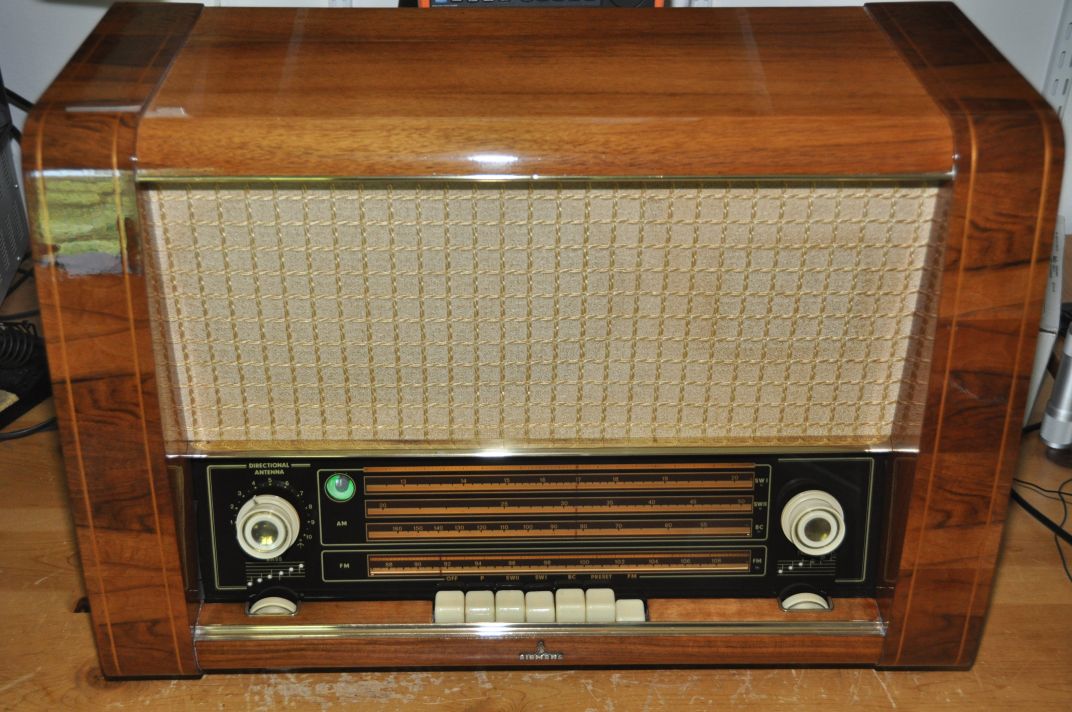
And this is a Siemens 1135W radio.
Siemens radios were relatively rare in those days - Grundig, Blaupunt
and Telefunken for instance sold a lot more radios.This particular
radio was adapted for the US market meaning the FM range was from 88 to
108 Mhz and not 88 to 100 Mhz which was the FM range in Europe in those
days. Of course the print on the dial is in English and there are
no station names on the dial! In Europe it was common to have station
names on the dial but that would not be practical in the US given the
large number of radio stations and the enormous distances - it just
wouldn't fit.
Most vendors had radio models adapted for the US market: Philips, Siemens, Grundig, Blaupunt, Telefunken and more. Note that most radios that were not adapted for the US market can still be used in the US: the input voltage can be switched, usually they supported 110, 125, 150 and 220 volts. Even in the US you will find a lot of radios that were actually meant to be sold in Europe: they were mostly brought home by military staff stationed in Europe when they returned to the US.
Most vendors had radio models adapted for the US market: Philips, Siemens, Grundig, Blaupunt, Telefunken and more. Note that most radios that were not adapted for the US market can still be used in the US: the input voltage can be switched, usually they supported 110, 125, 150 and 220 volts. Even in the US you will find a lot of radios that were actually meant to be sold in Europe: they were mostly brought home by military staff stationed in Europe when they returned to the US.
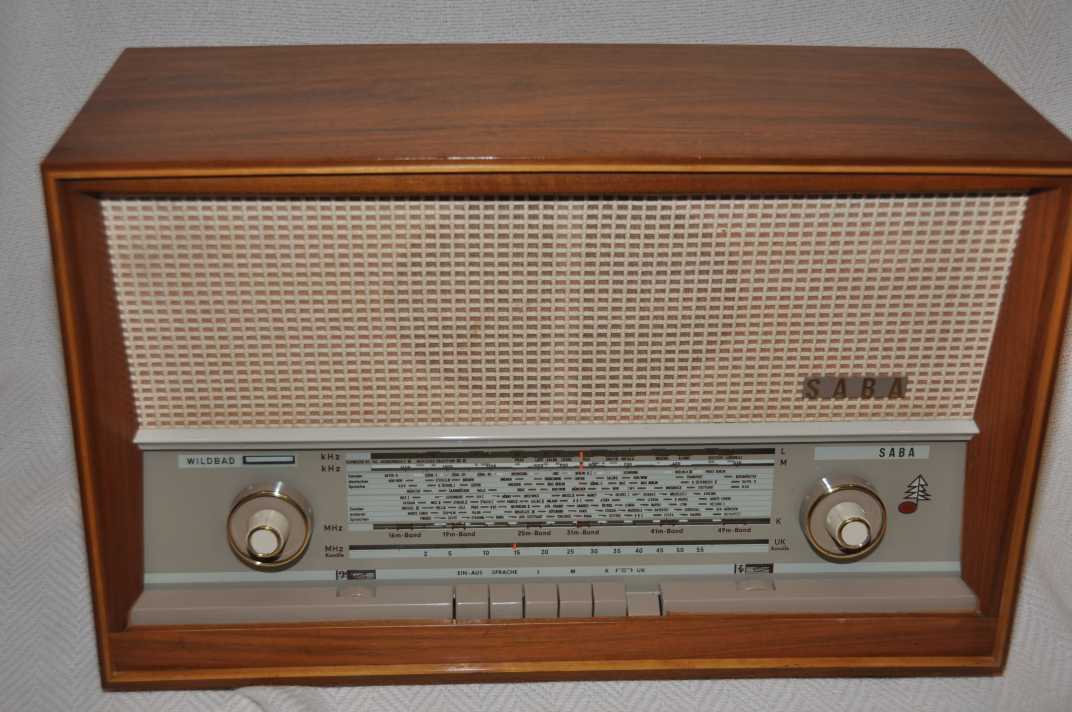
This is a Saba Wildbad 12 radio - note that is has the styling that was very popular in the early and mid sixties.Saba was a high end brand - expensive but good. This is a mid-sized radio but still it sounds impressive.
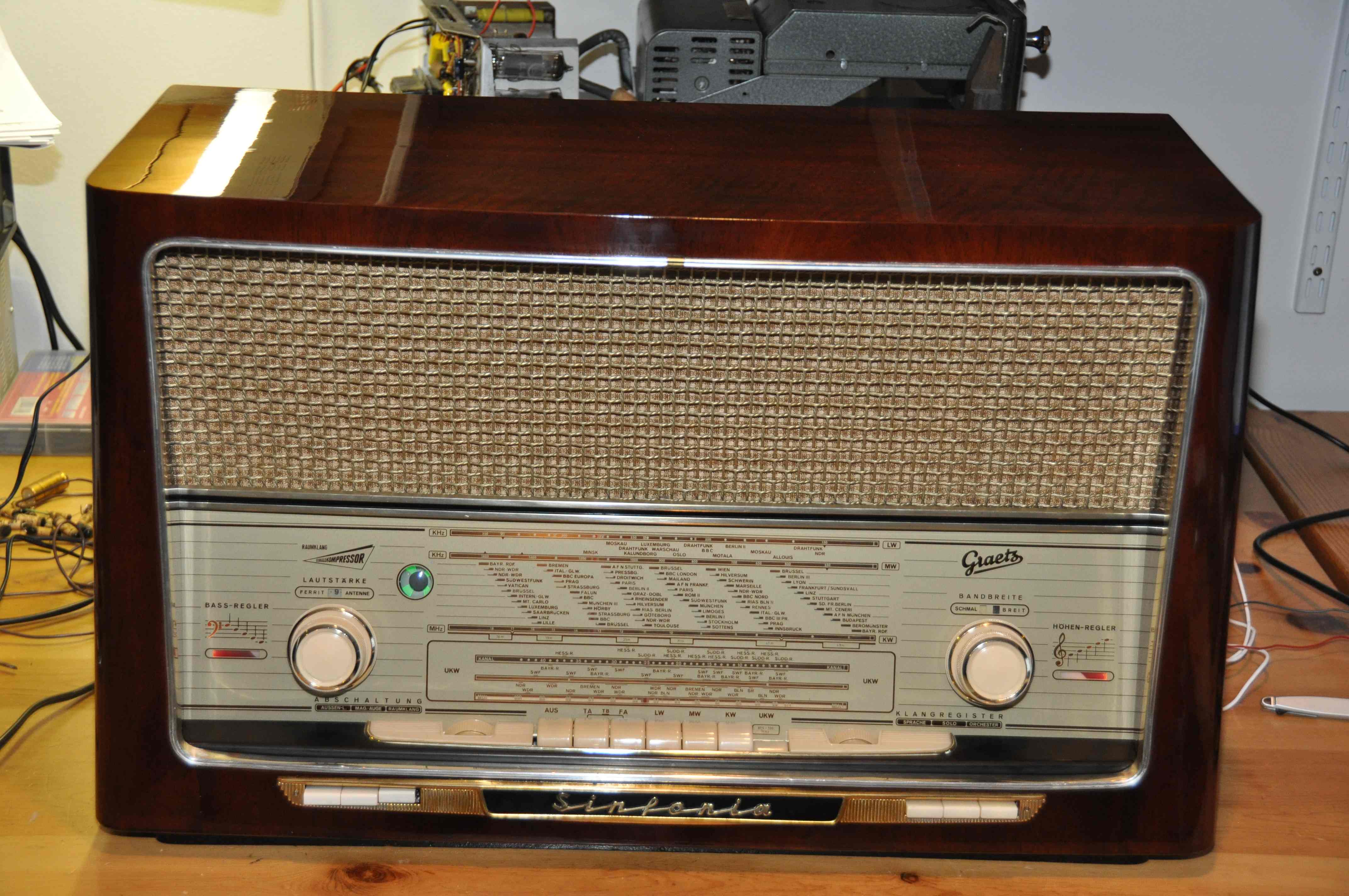
Here we have a Graetz Sinfonia 522 radio. Isn't this one beautiful? And it sounds really good too!
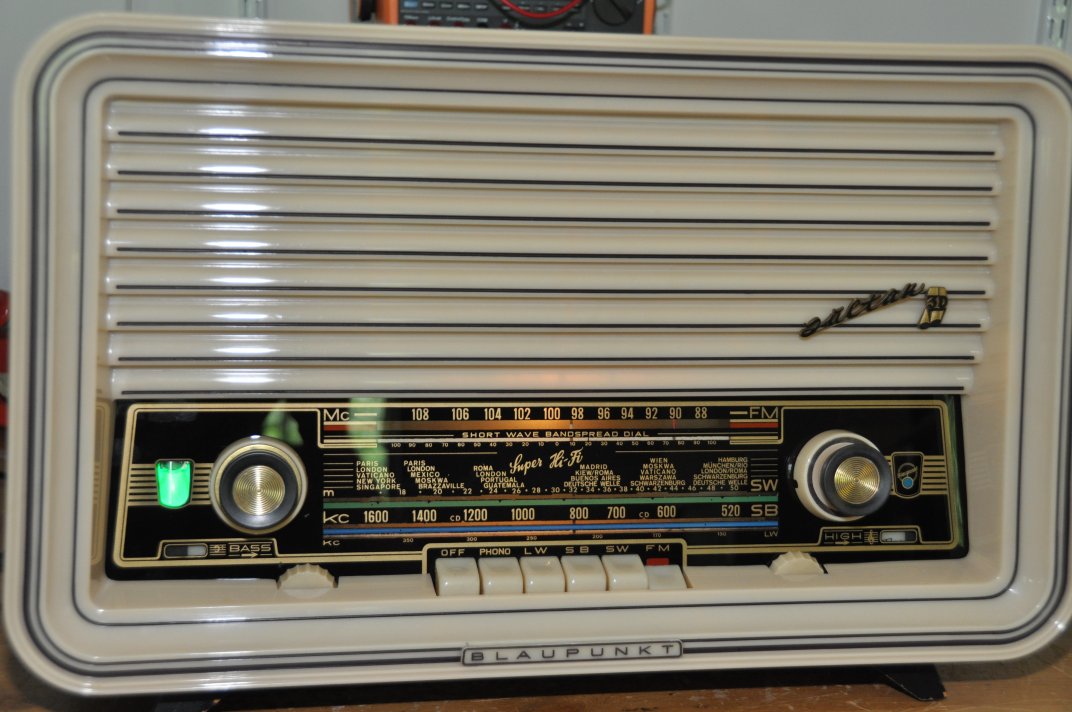
And here we have a smaller radio - but it is still a very nice one. This is a Blaupunkt Sultan 2320.
Ooops... this is not a radio.
Well, I stumbled onto this Grundig TK30 tape recorder and found out it
was from 1958
and I figured that it probably used the same technology as radios from
those years and it did - so I restored it. What amazed me is that it
actually sounded really good so it sits in my collection as a curiosity.
All photos on this page Copyright © 2014-2015 Ton's old Radios